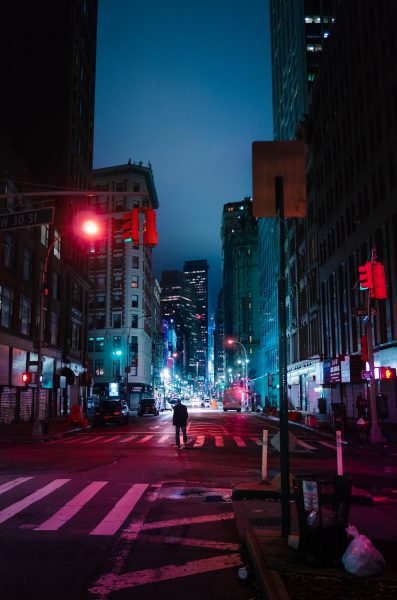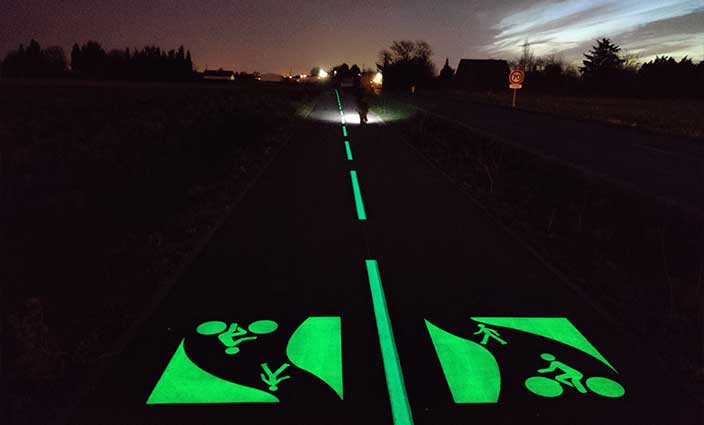How to reduce light pollution?
19 April 2022Table of content

Water, air and soil pollution are now well recognized as major problems for our planet’s biodiversity and our health. There’s another type of inconvenience that’s just as harmful in the city: pollution generated by artificial light sources at night.
What is light pollution?
Light pollution is a phenomenon caused by the excess of artificial light emitted by lighting sources, which interferes with the natural darkness of the night. It occurs mainly in urban and suburban areas, where street lights, neon signs and other simulated light sources are abundant and poorly directed in the city.
A harmful impact on the environment and the planet
Light pollution has a number of harmful effects on the climate and society, including :
- Wildlife disturbance: Excessive outdoor lighting at nighttime can disorient nocturnal animals, disrupting their sleep cycles, altering their foraging behavior and exposing them to predators. Migratory birds in the sky and sea turtles are particularly sensitive to these nuisances.
- Effect on human health: Excessive exposure to glow light in cities at night can disrupt human circadian rhythms, leading to sleep problems, metabolic disorders and a deterioration in mental well-being. Reducing exposure can help people to stay in good health and avoid troubles.
- Power wastage: Light pollution results in a considerable loss of energy, as much of the light emitted is directed towards the sky or other unwanted area, rather than actually illuminating the target space. This represents a financial loss for communities each year and contributes to climate change.
- Reduced visibility of the night sky: Places affected by light inconvenience often have darkened evening skies, making it difficult to observe stars, planets and other celestial phenomena during night-time.

Biodiversity threatened by light pollution
In France or on international base more generally, light pollution is a major factor in the disruption of flora and fauna: a bird can lose its bearings in the sky, a nocturnal insect become barriers or death traps, mammals’ feeding habits are disrupted, the plant cycle is altered, and human sleep and health are adversely affected… The light generated by lighting or led systems in the dark has serious consequences for the life cycle of living beings on the planet.
The impact of light ubiquity on living species is an important area of study in ecology, as it affects various forms of life, particularly those that are nocturnal or depend on sontaneous cycles of darkness and light. Here are just some of the adverse influence on wildlife caused by light pollution nuisance:
- Disorientation of nocturnal wildlife: Artificial light and Led bright can disorientate many animals in the dark, such as bats, insects, night birds into the sky and also some fish species. They can confuse unnatural light with the regular glow of the moon or stars, which can disrupt their migration, breeding, hunting and foraging behavior.
- Alteration of sleep cycles: Animals are often synchronized with sunlight and dark cycles. The presence of nocturnal bright can disrupt these cycles and their development, causing sleep and rest problems for many species.
- Increased predation: nocturnal predators can benefit from light pollution, as it can help their hunting by illuminating potential prey. This can lead to an imbalance in prey and predator populations, with consequences for ecosystems.
- Habitat degradation: Excessive light can alter the structure of typical habitats by disturbing vegetation, altering the nesting behaviour of birds and modifying the distribution of insects, which can have an influence on food chains and interactions between species.
- Effect on reproduction: Some species, such as sea turtles, can be affected by light pollution during nesting. Glow lights can disorientate hatchlings, preventing them from reaching the sea and reducing their chances of survival.
In short, light pollution disrupts many facets of the lives of nocturnal species and those that depend on regular cycles of light and darkness. It is therefore essential to take steps to minimize this harmful nuisance by adopting more responsible lighting practices and limiting the emission of unnecessary light in the dark. This will help preserve international biodiversity and protect ecosystems, even in municipalities and towns.
Street lighting, the focus of attention in urban area
 |
In France, the energy consumed by public lighting accounts for around 47% of the electricity used by local authorities (12.8 TWh, including 5.6 TWh per year for outdoor lights), 16% of their consumption from all sources and 37% of their electricity bill*. *Source: ADEME (French Agency for Ecological Transition) To lower light pollution, measures such as installing more efficient luminaires, orienting lighting appropriately, using light sensors and raising public awareness of the problem are being implemented all over France. |
In addition, a number of local authorities have adopted the “Dark-sky Preserve” approach. The “dark sky network” concept refers to an approach to best light management in the nocturnal hours, that aims to preserve areas where native darkness is maintained, creating “islands” or “grids” of darkness in the midst of urbanized or illuminated skies.
The aim is to reduce the amount of artificial outdoor light unnecessarily emitted into the atmosphere, in order to preserve the natural darkness of the night and reduce the harmful effects on the climate, nature and the well-being of living beings.
In recent years, politicians and elected representatives have taken up this issue, and standards have been introduced and major renovation work carried out on simulated lighting systems. Sustainable development plans have also been launched to help the movement. Manufacturers are innovating to create alternatives and make it possible to use best outdoor lights or autonomous signage adapted according to needs and locations.
Among these innovations, LuminoKrom® paint is a major contributor to enabling local authorities to offer sustainable illuminated signage for bicycle and pedestrian facilities, with very low environmental effect.
Photoluminescent marking, the best alternative to street lights
Reducing light pollution: the LuminoKrom® solution emits 10,000 times less glare than artificial lighting.
The function of a street lamp or leds lamp is to illuminate the space with a wide beam and high intensity for people crossing the site . A lamp post has a luminance of 3 candelas over 200 m². Over 100 m, with a lamp post every 20 m, the luminance emitted will be 3000 candelas!
In contrast, LuminoKrom® paint produces the needed glare, a very diffuse luminous intensity. It doesn’t illuminate the environment, but illuminates itself, with the aim of being seen from a great distance during 10 hours. Thus, the luminance emitted by an axial guide (T3 / 6 cm) of LuminoKrom® over 100 m is only 300 millicandelas on average.
With 10,000 times less glare emitted than street lighting, the LuminoKrom® solution is a real alternative where city lights are a threat to biodiversity.

Illuminated signs – LuminoKrom® photoluminescent paint
Combining user safety and respect for the environment
LuminoKrom® paint is a renewable-energy light source, charged by UV rays during the day and illuminated into the dark, without electricity or CO2 emissions. Its use helps reduce greenhouse gas emissions caused by traditional lighting in the society.
LuminoKrom® is the most environmentally-friendly lighting solution, according to the product Life Cycle Assessment (LCA) study carried out by APESA, an expert consultancy serving transitions, companies and territories.
Cities turned off on the evening, developments in vegetated or protected spaces, inter-urban links in the countryside, riverbanks… LuminoKrom® offers a simple solution to enhance user safety during night-time mobility and to turn into a green vision of mobility.
The most economical solution on the market
LuminoKrom® paint requires little maintenance and is very economical for local authorities compared with traditional lamps. Installation is fifty times cheaper than street lighting and five times cheaper than LED solar panels.
For local authorities which want to turn off, the use of illuminated markings entails no electricity consumption. Living spaces are lit with needed glare without LEDs or lamps, using only the innate photoluminescence of our road paint.









